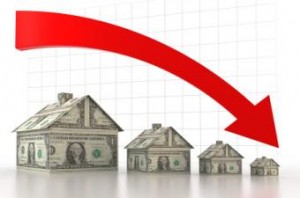 According to the National Association of Realtors (NAR) recent press release, existing-home sales declined in April in all major regions except for the Midwest, but remained above an annual sales pace of five million for the second straight month.
According to the National Association of Realtors (NAR) recent press release, existing-home sales declined in April in all major regions except for the Midwest, but remained above an annual sales pace of five million for the second straight month.
Total existing-home sales, which are completed transactions that include single–family homes, townhomes, condominiums, and co–ops, dropped 3.3 percent to a seasonally adjusted annual rate of 5.04 million in April from 5.21 million in March, NAR reported. Despite the monthly decline, homes have been selling faster than any other time since July 2013, and sales have increased year-over-year for seven consecutive months and are 6.1 percent above last year.
“Sales in April failed to keep pace with the robust gain seen in March and April's setback is the result of lagging supply relative to demand and the upward pressure it's putting on prices," said Lawrence Yun, NAR chief economist. "However, the overall data and feedback we're hearing from Realtors continues to point to elevated levels of buying interest compared to a year ago. With low interest rates and job growth, more buyers will be encouraged to enter the market unless prices accelerate even higher in relation to incomes."
NAR also reported, the total amount of housing inventory increased 10 percent to 2.21 million existing homes available for sale at the end of April, but is still 0.9 percent below a year ago (2.23 million). Unsold inventory for April is at a 5.3–month supply at the current sales pace, an increase from 4.6 months in March.
The median existing–home price for all housing types experienced an 8.9 percent increase from last year at $219,400, according to the report. This is the largest price gain since January 2014 at 10.1 percent and the 38th consecutive month of year-over-year price gains.
Housing demand far exceeds supply causing properties to sell within 39 days in April, compared to 42 days in July 2013, and the second shortest time since 37 days in June 2013 since the NAR began documenting existing-home sales in May 2011, the report mentions. Short sales lasted on the market the longest at 180 days in April, foreclosures sold in 50 days, and non-distressed homes in 38 days. Forty-six percent of the homes on the market in April sold in less than a month.
"Housing inventory declined from last year and supply in many markets is very tight, which in turn is leading to bidding wars, faster price growth and properties selling at a quicker pace," Yun said. "To put it in perspective, roughly 40 percent of properties sold last month went at or above asking price, the highest since NAR began tracking this monthly data in December 2012."
Chris Polychron, NAR president and executive broker with 1st Choice Realty in Hot Springs, Arkansas, warns that as lenders adjust to new rules set forth by the Truth in Lending Act and the Real Estate Settlement and Procedures Act (TILA-RESPA integrated disclosure rule), closings for some home sales could lag after August 1 and into the fall season.
"There likely will be bumps in the closing process while all parties get used to the new requirements," Polychron said. "We hope that the move away from the HUD–1 is smooth, but even if only 10 percent of transactions experience closing issues, that's as many as 40,000 transactions a month."
To view the full report: Realtor.org

 theMReport.com Your trusted source for mortgage banking news
theMReport.com Your trusted source for mortgage banking news








